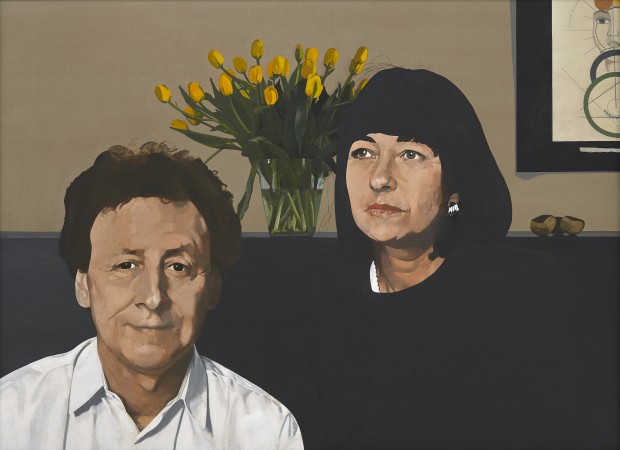Painters and sculptors are highly averse to being labelled. So much so that it seems fairly certain that, if asked, Michelangelo would have indignantly repudiated the suggestion that he belonged to something called ‘the Renaissance’. Peter Blake is among the few I’ve met who owns up to being a member of a movement; he openly admits to being a pop artist. The odd thing about that candid declaration is that I’m not sure he really is one.
A delightful exhibition at the Waddington Custot Gallery presents Blake in several guises, including photorealist and fantasist, but — although one of the exhibits is an elaborate shrine in honour of Elvis Presley — ‘pop’ is not the term that comes to mind.
One reason why artists don’t like being classified is that the more those categories — baroque, impressionist — are examined, the more they fall apart. For example, Blake has genuinely ‘pop’ tastes in one sense: he is a fan of rock’n’roll — indeed famously created an album cover for the Beatles. But there is none of the irony of an Andy Warhol about his work, or the intellectual distance of Richard Hamilton. He comes across partly as a gentle realist, and partly as a romantic with a love of eccentric outsiders.
One half of the exhibition is made up of portraits, among them a fine one of Leslie Waddington, founder of the gallery, whose death was announced this week. Blake makes no secret of the fact that these are based on photographs, which he traces. Such a procedure has been common for centuries, but a superstitious feeling lingers that it is somehow ‘cheating’ to use a camera to help make a painting. But what Blake is doing is far more subtle than simply copying a photograph.








Comments
Join the debate for just £1 a month
Be part of the conversation with other Spectator readers by getting your first three months for £3.
UNLOCK ACCESS Just £1 a monthAlready a subscriber? Log in